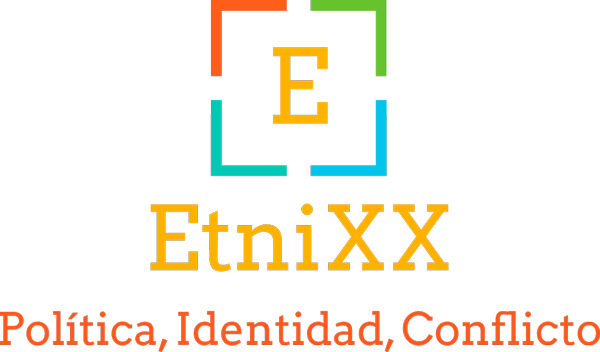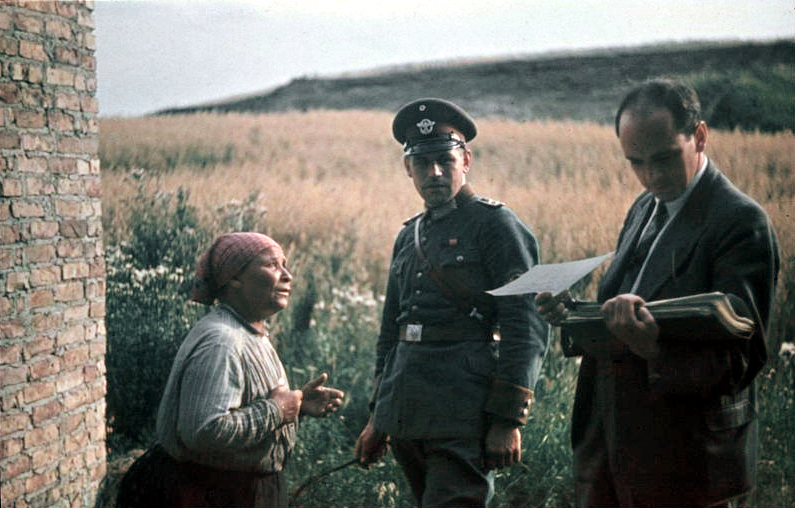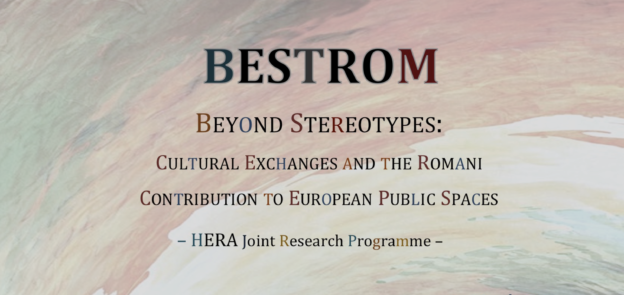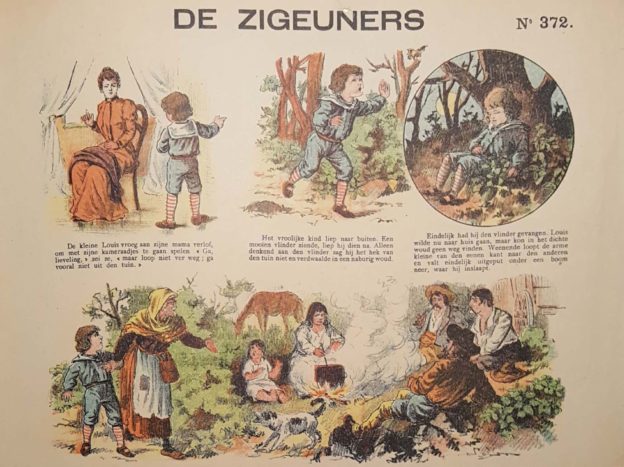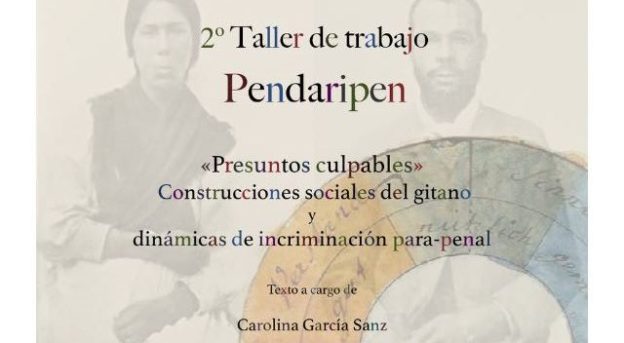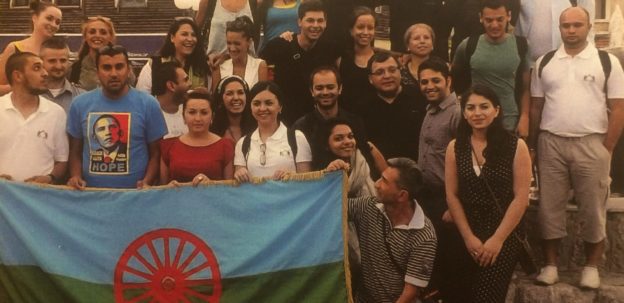El proceso secular que ha ido conformando la visión del pueblo gitano como un grupo subalterno, distinto e inferior a la autodenominada sociedad civilizada (occidental, blanca), es el motivo que reúne a los nueve especialistas que participan en el nuevo número de la revista Historia Social. Coordinado por María Sierra, este dosier recorre un largo camino cronológico (desde el siglo XVI hasta mediados del XX) en busca de los orígenes y el desarrollo de las representaciones del pueblo gitano. Pretende, por tanto, rastrear las derivaciones de una imagen inventada, no de una realidad humana que –sabemos– queda muy lejos de las ficciones aquí estudiadas.
BLOG
«Beyond Stereotypes: Cultural Exchanges and the Romani Contribution to European Public Spaces» es el título del proyecto y de la aventura en la que a partir de mayo de 2019 algunos miembros de nuestro grupo se verán inmersos.
Tras concurrir a la convocatoria «Public Spaces: Culture and Integration in Europe (2019-2022)», promovida por HERA (Humanities in the European Research Area), el proyecto «Beyond Stereotypes…» ha sido seleccionado para desarrollar un variado y novedoso plan de investigaciones durante dos años. Este éxito se debe al esfuerzo colectivo del consorcio BESTROM, liderado por María Sierra (Universidad de Sevilla) y conformado por cuatro equipos que desarrollarán diferentes aspectos de la investigación en Reino Unido, Polonia, Finlandia y España. Desde hace más de un año, los profesores Eve Rosenhaft (University of Liverpool), Peter Stadius (University of Helsinki), Anna G. Piotrowska (Jagiellonian University) y María Sierra vienen trabajando conjuntamente para elaborar un plan de investigación que se propone explorar la contribución de las minorías romaníes a la construcción de los espacios públicos europeos. De este modo, el objetivo esencial que guía a BESTROM es subrayar la necesidad de considerar al pueblo romaní un agente activo en la construcción de las identidades europeas pasadas y presentes.
La historia de los gitanos es uno de los vacíos más evidentes y sangrantes al que se enfrenta cualquier disciplina comprometida con un conocimiento socialmente útil del pasado. Hace ya casi tres años, los integrantes del proyecto Pendaripen vimos en este vacío historiográfico un reto con el que la Academia debía comprometerse en su propósito (muchas veces enunciado, solo a veces realizado) de generar conocimientos que contribuyan a hacernos ciudadanas y ciudadanos más conscientes de nuestro pasado y más responsables con nuestro presente. Después de meses de intenso trabajo, acaba de salir a la luz uno de los frutos de este esfuerzo colectivo, el dossier «Gitanos: una historia negada», dirigido por María Sierra y publicado en la revista Historia y Política.
La escritura es una poderosa arma de combate y de transformación social. No es difícil comprobar que muchas de las culturas y colectivos históricamente oprimidos han acudido a ella como instrumento de réplica, reafirmación y dignificación. En Romani Writing: Literacy, Literature and Identity Politics (2014), Paola Toniato elabora un meticuloso estudio sobre el papel que la escritura y la literatura han tenido en el desarrollo de la cultura romaní europea. Lo hace partiendo de la necesidad de explorar tanto la repercusión de las políticas educativas en el desarrollo de una cultura escrita romaní, como la función política actual de la literatura producida y protagonizada por los propios gitanos.
PENDARIPEN has participated in the international conference The Legacies of the Romani Genocide in Europe Transnational and Comparative Perspectives, held in Paris from 17th to 18th of February.
This workshop explores the legacies of the genocide of Europe’s Roma in transnational and comparative perspective, with particular interest in three aspects of this history: the production and circulation of knowledge about the genocide from 1945 until today, the ways in which these cognitive frameworks have shaped institutional and legal practices, and the individuals and communities (Roma and non-Roma) whose personal histories intersected with – and shaped – these transformations of knowledge and institutions since 1945.
The consortium BESTROM held its first International Meeting at the University of Seville on April 11th 2018. The main objective was to developed the proposal “Beyond Stereotypes: Cultural Exchanges and the Romani Contribution to European Public Spaces” to apply to the HERA Call for 2017 Public Spaces: Culture and Integration in Europe. As the Call states: “The challenge for research is to identify how the relations between culture and integration within the context of public space(s) have been modelled and how they can be better understood in order to contribute to a better world”. Within this framework, BESTROM explores the cultural contribution to Europe’s public spaces of its diverse Romani minorities considering them as agents in the processes of building European shared commons and identities. Approaching them as active subjects of cultural production, the research goes beyond scholarship that treats “Gypsies” as passive objects of “othering”. It’s obvious we want to challenge stereotypes and to promote critical reflection about “otherness”.
«I use the word “gypsy” because it is the operative term used in the children’s literature to be discussed. Also to stress that it concerns an idea, a construction pretending to represent ‘real’ people. Therefore this fiction contributed to attitudes that really affected (and often disfigured) the lives of people.»
With this powerful statement our colleague Jean Kommers opens a lecture about the role of the «gypsies» in children´s literature at the Jewish Historical Museum of Amsterdam (April 21, 2018). His lecture offers a dialogue with the study about Jews in Children’s books by Ewout Sanders (Levi’s eerste kerstfeest. Jeugdverhalen over Jodenbekering, 1792-2015 [Levi’s first Christmas, Juveniles about the conversion of Jews). PENDARIPEN provides a summary of this interesting activity, that will take place on April 21 (2018).The lecture is mainly about an idea which in juveniles is related in particular with “gypsies”: the stealing of children. A booklet edited in 1993 (and re-issued in Spanish in 2016) was called “Stealing of Children, or Stealing of Gypsies?”. Main thesis was that rather than “gypsies” are stealing children, the various authors are ‘stealing’ “gypsies” to (mis)use them for a range of goals. The stories – often openly about didactic ideas – in fact are about power and inequality.
El pasado día 22 de febrero tuvo lugar el segundo taller de trabajo del Proyecto Pendaripen, celebrado en la Universidad de Sevilla. En esta ocasión, el seminario consistió en un debate a partir del texto presentado por nuestra compañera Carolina García Sanz, titulado «Presuntos culpables». Construcciones sociales del gitano y dinámicas de incriminación para-penal.
«Why we need Romani history. Endeavours to conduct collaborative research» was the title of the lecture given by María Sierra on January 30 in the Treasures of the Brotherton Gallery of the University of Leeds. With this disturbing sentence, she introduced several reflections in relation to our research project, beginning with the question of why it is often said that Roma people have no history. As María Sierra explained, this affirmation –coined by the English writer George Borrow– reflects how modern societies have understood Roma as nomadic and illiterate people without historical consciousness; people who didn’t (and still don’t) fit in a concept of History made from the colonialist and excluding western perception.
The acronym HEIM stands for Higher Education Internationalisation and Mobility: Inclusion, Equalities and Innovations, which is the name of one of the research projects funded by European Horizon 2020 (Marie Sklodowska-Curie Actions, H2020-643739), in which several colleagues at the University of Seville, directed by Mayte Padilla, are currently participating. Mayte represents the Andalusian Spanish arm of a powerful research partnership, which includes the coordinating university, the University of Sussex in the UK, where the Project Director, Professor Louise Morley, is based, the University of Umeá in Sweden and the Roma Education Fund in Budapest, Hungary. This website provides more detailed information about the Heim project. The main objective of HEIM is to assess the international situation of the Roma communities in the area of higher education and to promote general and academic policies to encourage access and mobility among Gypsy students, both male and female.


